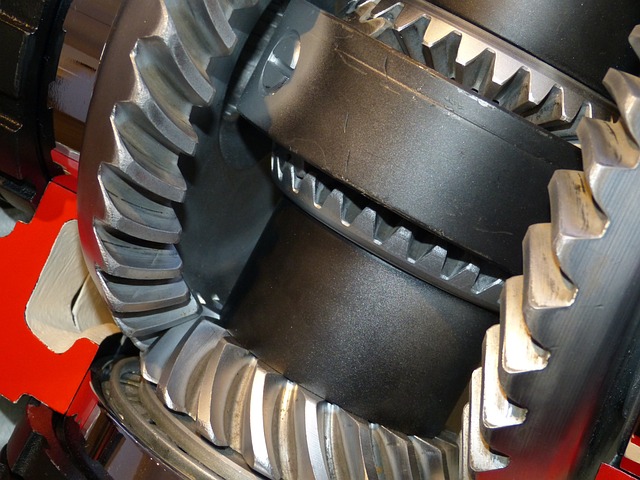Automobile transmissions are integral to a vehicle's performance and efficiency, serving as the critical link between the engine and wheels. They manage gear changes to deliver power smoothly, adapting to road conditions, load, and acceleration needs. Manual gearboxes with clutch pedals differ from automatic transmissions that utilize electronic controls for seamless shifting. Understanding transmissions is essential for anyone delving into automotive mechanics due to their complex interplay of gears, clutches, and hydraulic or electronic components. The transmission's design significantly influences fuel economy, acceleration, and the vehicle's overall reliability. From manual gearboxes that honed driver skills to modern automatic systems that simplify driving with advanced computational systems, adaptive shift logic, and vehicle sensors, transmissions have undergone a significant transformation. Regular maintenance is non-negotiable for ensuring longevity and performance; it includes monitoring transmission fluid levels and conditions, checking for leaks, and addressing any unusual sounds promptly to avoid costly repairs or transmission failure. Adhering to manufacturer-specific maintenance guidelines is crucial, as is recognizing signs of potential issues, such as changes in gear shifts or dashboard warning lights, which necessitate immediate professional attention. In essence, by prioritizing the care and maintenance of your automobile's transmission, you can significantly extend its life, enhance reliability, and maintain a smooth, safe driving experience, all while promoting efficiency and reducing the likelihood of future mechanical issues.
Automobile transmissions are the unsung heroes of road travel, enabling vehicles to navigate with ease and efficiency. This article delves into the intricate mechanics behind these systems and their profound impact on performance. We’ll trace the evolution from manual gearboxes to sophisticated automatic transmissions, revealing how technological advancements have transformed driving experiences. Additionally, we’ll provide essential maintenance tips to safeguard your car’s transmission, ensuring its longevity and reliability. Understanding automobile transmissions is not just about operational knowledge; it’s a key aspect of automotive maintenance and innovation.
- Understanding the Mechanics of Automobile Transmissions and Their Critical Role in Vehicle Performance
- The Evolution of Automobile Transmissions: From Manual to Advanced Automatics
- Maintenance and Care for Your Vehicle's Transmission to Ensure Longevity and Reliability
Understanding the Mechanics of Automobile Transmissions and Their Critical Role in Vehicle Performance

The intricate mechanics of automobile transmissions play a pivotal role in the efficiency and performance of vehicles. A transmission functions as the intermediary between an engine and the wheels, facilitating smooth transitions between different speeds by changing gears. This system is critical for optimizing engine power, ensuring that it delivers the appropriate amount of torque to the drivetrain based on road conditions, vehicle load, and desired acceleration. Understanding how transmissions operate, from the manual gearboxes with a clutch pedal to the advanced automatic transmissions with integrated electronic controls, is essential for grasping the fundamental principles of automotive mechanics. These mechanisms involve complex interactions between gears, clutches, and hydraulic or electronic systems that must work in harmony to deliver a seamless driving experience. The design and functionality of an automobile’s transmission significantly affect its fuel efficiency, acceleration capabilities, and longevity. As such, the study and maintenance of these systems are of paramount importance for both enthusiasts and professionals in the automotive industry, ensuring that vehicles can perform optimally across diverse driving scenarios.
The Evolution of Automobile Transmissions: From Manual to Advanced Automatics

The evolution of automobile transmissions represents a remarkable journey from manual gearboxes to sophisticated automatic systems that define modern vehicular dynamics. Initially, cars were equipped with manual transmissions, requiring drivers to manually select and change gears based on speed and road conditions. This method honed driving skills and allowed for precise control over the vehicle’s performance but was also labor-intensive and demanded a steep learning curve from new drivers.
Over time, as technology advanced, automatic transmissions emerged, offering a seamless and user-friendly alternative to manual gear shifting. These systems integrated gearboxes with hydraulic or electrical mechanisms that could automatically select the most appropriate gear ratio for optimal performance, smoothness, and fuel efficiency. This shift significantly broadened the appeal of driving, as it removed the complexity and physical effort associated with manuals. Today’s automobile transmissions are marvels of engineering that incorporate advanced computational systems, adaptive shift logic, and real-time vehicle sensors to provide an unparalleled driving experience. The progression from the simple manual transmission to today’s high-tech automatics exemplifies the automotive industry’s commitment to innovation and consumer comfort, ensuring vehicles remain at the forefront of transportation technology.
Maintenance and Care for Your Vehicle's Transmission to Ensure Longevity and Reliability

Regular maintenance and attentive care are pivotal for the longevity and reliability of your vehicle’s automobile transmissions. Neglecting this component can lead to costly repairs or, in extreme cases, transmission failure. To safeguard your investment, it is imperative to adhere to a maintenance schedule that includes checking transmission fluid levels and condition, as well as inspecting the transmission for any signs of leaks or abnormal noises. The transmission fluid, a critical element in the hydraulic system of automobile transmissions, should be flushed and replaced at recommended intervals to ensure optimal performance and to prevent overheating, which can cause internal damage.
Moreover, it is essential to pay heed to the manufacturer’s guidelines for your specific vehicle make and model. These recommendations often include particular operational conditions and service intervals tailored to the automobile transmission’s design and functionality. Proactive monitoring of the transmission’s behavior during operation can also alert you to potential issues before they escalate into major problems. For instance, noticeable changes in gear shifts or an illuminated warning light should prompt a visit to a professional mechanic for diagnosis and repair. By prioritizing the maintenance and care of your vehicle’s automobile transmissions, you not only extend its lifespan but also enhance its reliability on the road, ensuring a smoother and safer driving experience.
The intricate systems within automobile transmissions play a pivotal role in the efficiency and performance of vehicles, as explored in our discussion. From the historical transformation of manual transmissions to the sophisticated automatic variants of today, the evolution of this critical component underscores the significant advancements in automotive technology. Regular maintenance and care are imperative for the longevity and reliability of a vehicle’s transmission, ensuring smooth operation and safety on the road. Understanding the mechanics behind automobile transmissions not only enhances one’s appreciation for this engineering marvel but also empowers drivers to make informed decisions about their vehicle’s upkeep. As such, recognizing the importance of transmissions is key for any automobile enthusiast or owner aiming to maintain optimal performance and longevity.



